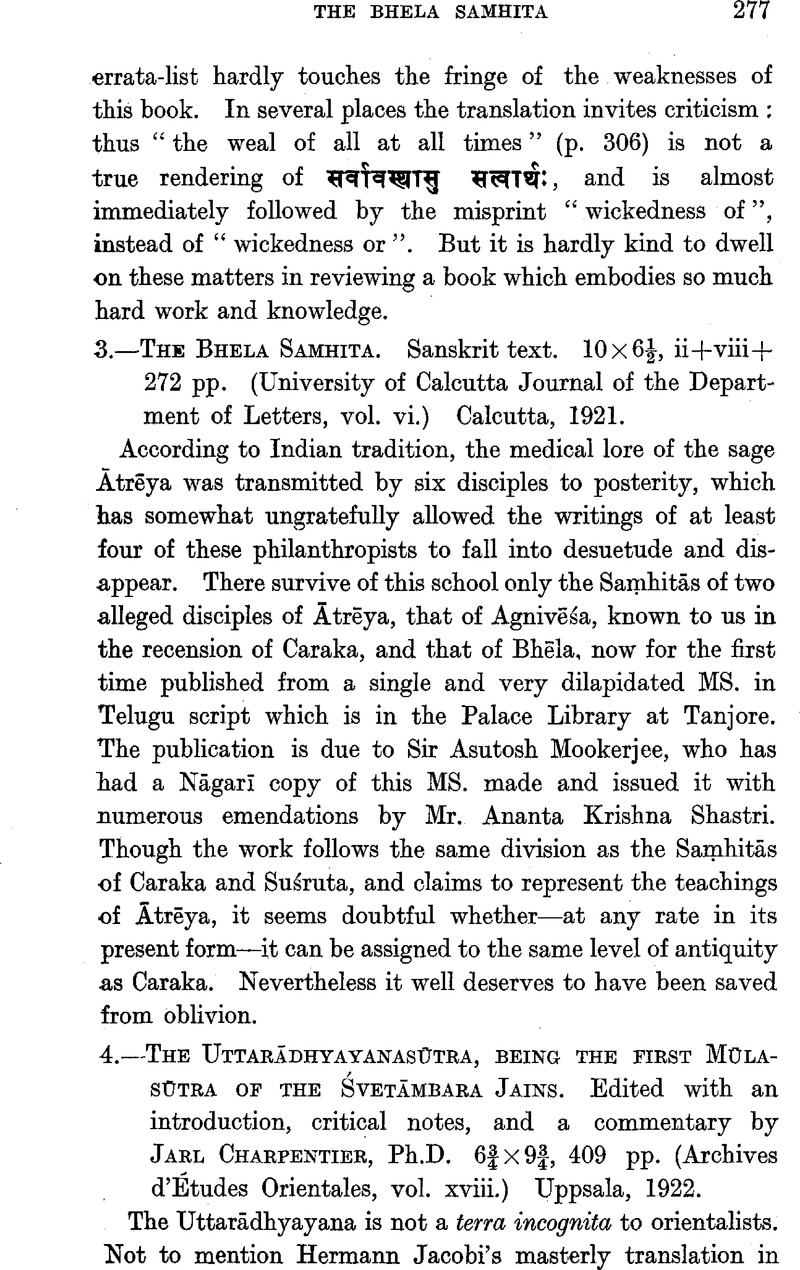No CrossRef data available.
Article contents
4.—The Uttarādhyayanasūttra, being the first Mūlasūtra of the Śvetāmbara Jains. Edited with an introduction, critical notes, and a commentary by Jarl Charpentier, Ph.D. 6¾ × 9¾, 409 pp. (Archives d'Études Orientales, vol. xviii.) Uppsala, 1922.
Published online by Cambridge University Press: 15 March 2011
Abstract

- Type
- Notices of Books
- Information
- Copyright
- Copyright © The Royal Asiatic Society 1923
References
1 As such we may note that of i, 7, where he reads with Pischel (GP. 231, 254) niyāga, as against J.'s nioga. Niyāga, Skt. nyāya, should mean “ arrival” : cf. the usage of the verb, and the analogy of prāpti. On the other hand, we cannot wholly endorse his reading jannaṭṭhā ya jē diyā (Skt. yajñasthāš ca yē dvijāḥ), which he admits to be unmetrical, but still thinks to be “ certainly more correct” than J.'s jiiṁdiyā (Skt. jitēndriyāḥ). It may be due to a mere accident that jē diyā gives sense; and an editor should be very chary of admitting unmetrical readings.
2 With regard to the remarks on nisīhiyā (page 283) it may not be amiss to call attention to the common use of nisidige or nisidhige in Kanarese inscriptions. It is the same word in origin, and it means there “ grave ”, “monument”.


